#Cat history
Explore tagged Tumblr posts
Text

tiddles the church cat
#christian cats#christian blog#graveyard#gravestone#cemetery#cat history#cat art#headstone#grave#church aesthetic#church#cathedral#church cat
49K notes
·
View notes
Text
I love this. I posted a little about this before, but wanted to expand. Women's history fact of the day:
Women of the Neolithic era in particular loved keeping pets and it was common for them to trap small animals - such as cats - and adopted as pets.
In the Amazon region, where hunting and gathering and subsistence horticulture is still practiced by a handful of surviving Amerindian groups, hunters commonly capture young wild animals and take them home where they are then adopted as pets, usually – although not invariably – by women.
There's a theory that cats may have domesticated themselves by being attracted to human villages that produced grain and seeds and attracted rodents, and then the bolder cat clans survived under natural selection. Or, alternatively, women domesticated cats.
Based on these sorts of observations, it could be argued that the domestication of F.s. libyca occurred where and when it did because tamed wildcats were already an integral feature of village life as a result of people actively adopting, hand-rearing and socialising young wildcats to keep as pets
The relationship between cats and women stretch back since the stone age. They were burned with us during the witch trials (rabbits commonly too!), suffered from abuse and treated as property with us by men ambivalent to us under religions such as Christianity, were associated as us within medieval folklore and as a metaphor for female sexuality and anatomy ("pussy"), and continue to be associated with us today.
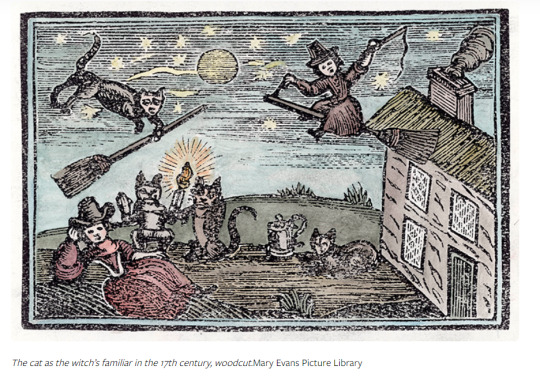
Women's independence from man is derogatorily associated with cats ("crazy cat lady"), a nod to female (and feline) separatism. It's tendency to groom itself frequently was also associated with cleanliness and domesticity, and it was frequently used in posters by anti-suffragettes symbolically to denote that women were simple and delicate, that women's suffrage was as absurd as cat suffrage. Some suffragettes took back the meaning of the cat, adopting a (black!) cat named Saxon as their official mascot.

They survived male oppression throughout history, for thousands of years, right beside us and within our arms.
#cats#cat appreciation post#cat history#women's history#women and cats#kitties#witch trials#witchcraft#human history#evolution
534 notes
·
View notes
Text

On March 11, 889 CE, 22-year-old Emperor Uda wrote of his cat:
“On the 6th Day of the 2nd Month of the First Year of the Kampo era. Taking a moment of my free time, I wish to express my joy of the cat. It arrived by boat as a gift to the late Emperor, received from the hands of Minamoto no Kuwashi.
The color of the fur is peerless. None could find the words to describe it, although one said it was reminiscent of the deepest ink. It has an air about it, similar to Kanno. Its length is 5 sun, and its height is 6 sun. I affixed a bow about its neck, but it did not remain for long.
In rebellion, it narrows its eyes and extends its needles. It shows its back.
When it lies down, it curls in a circle like a coin. You cannot see its feet. It’s as if it were circular Bi disk. When it stands, its cry expresses profound loneliness, like a black dragon floating above the clouds.
By nature, it likes to stalk birds. It lowers its head and works its tail. It can extend its spine to raise its height by at least 2 sun. Its color allows it to disappear at night. I am convinced it is superior to all other cats.”
13 notes
·
View notes
Text
Ragdolls and Ragamuffins
A Ragdoll cat is a pointed breed with blue eyes. Most variations from that are not considered Ragdolls.
These points will be significantly darker than the base of their bodies. ↓↓↓


A Ragamuffin can be any color or coat pattern except pointed. They can have any eye color.
This breed was created by crossing Ragdolls with other longhaired cats, including Turkish Angoras, Himalayans, Persians and longhaired domestic cats. ↓↓↓


CONTROVERSY
The founder of Ragdoll cats and owner of Josephine (founder mother cat of the Ragdolls), Ann Baker, held stringent control over the breed and its classifications. This didn’t sit well with some admirers and caused a group of Ragdoll breeders to depart from Baker and her strict rules. After some hostile years, the group ended up with the Ragamuffin breed.
CREDITS TO LITTER ROBOT BLOG & ASPCA PET INSURANCE
#cat#cute#cat facts#cat fact#cats#interesting#science#genetics#biology#animals#ragdoll#ragdoll cat#ragdoll breed#ragdoll cat breed#ragamuffin#ragamuffin cat#ragamuffin breed#ragamuffin cat breed#cat breeds#cat breed origins#feline#feline history#cat history#cat controversy
28 notes
·
View notes
Text
Cats have lived alongside us for centuries, and our relationship with them has transformed over time – from venerating them to vilifying them. What roles have humans cast cats in over the years? Why were they seen as deities by the ancient Egyptians? And how did they come to be synonymous with witches? In our latest Everything You Wanted to Know episode, Dr Andrew Flack answers listener questions about the history of our relationship with these fascinating creatures.
The HistoryExtra podcast is produced by the team behind BBC History Magazine and BBC History Revealed.
#Cat history#cats#podcasts#podcast#history#bbc#history extra#history extra podcast#history extra magazine
12 notes
·
View notes
Text
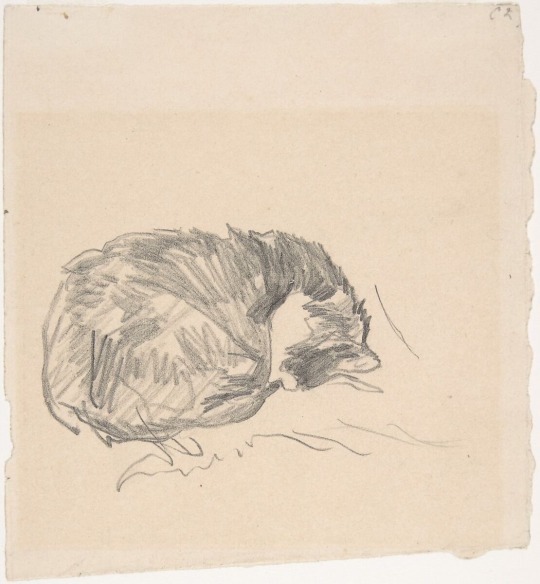
A Cat Curled Up, Sleeping
Edouard Manet c. 1861
17 notes
·
View notes
Text
Russian Blue Cats - The Enigmatic Beauties
A Glimpse into the Russian Blue’s History The Russian Blue cat, often referred to as the “Archangel Cat,” has a history that is as mysterious as it is fascinating. This breed is believed to have originated in the port city of Arkhangelsk, Russia, and has a lineage dating back to the 19th century. Today, Russian Blues are known for their striking appearance and charming personalities. The…
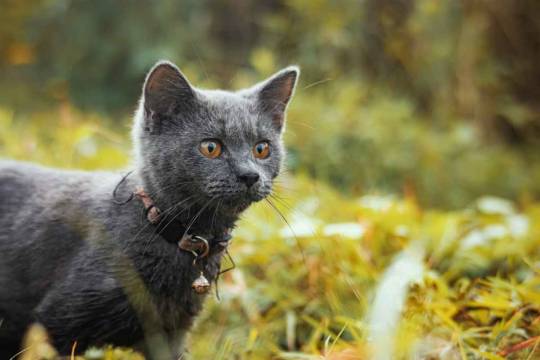
View On WordPress
#Archangel Cat#cat allergies#cat art#cat breeds#cat care#cat diet#cat elegance#cat enchantment#cat exercise#cat fur#cat grace#cat grooming#cat history#cat legends#cat lore#cat lovers#cat mental stimulation#cat personalities#cat photography#cat shyness#cat well-being#enigmatic beauties#famous cat stories#famous cats#famous feline appearances#feline history#gentle cats#hypoallergenic cats#loyal pets#pet beauty
2 notes
·
View notes
Text
Before photography, people had to really work at it to document their cats being little goblins.
And they did, because they knew how important this information is!




















Cats Stealing Food in Paintings
Still Life with Cat (1705) by Desportes, It's no use crying over spilt milk (1880) by Frank Paton, Still Life of the Remnants of a Meal with a Lunging Cat (18th Century) by Alexandre-François Desportes, Fish Still Life with Two Cats (1781) by Martin Ferdinand Quadal, Still Life with a Cat and a Mackerel on a Table Top (18th Century) by Giovanni Rivalta, The Collared Thief (1860) by William James Webbe, Cat Stealing a String of Sausages (17th Century) by Abraham van Beyeren, Still Life with a Cat (1760) by Sebastiano Lazzari, Kitchen Still Life with Fish and Cat (ca. 1650) by Sebastian Stoskopff, An Oyster Supper (1882) by Horatio Henry Couldery, Still Life with an Ebony Chest (17th Century) by Frans Snyders, Still Life with a Cat (1724) by Alexandre-Francois Desportes, A Cat Attacking Dead Game (18th Century) by Alexandre-François Desportes, Still Life of Fresh-Water Fish with a Cat (1656) by Pieter Claesz, Still Life with Fruits and Ham with a Cat and a Parrot (18th Century) by Alexandre-Francois Desportes, A Cat Holding a Fish in Its Mouth (18th Century) by Sebastiano Lazzari, Still Life with a Cat and a Hare (18th Century) by Desportes, Still Life with Cat and Rayfish (1728) by Jean-Siméon Chardin, A Cat with Dead Game (1711) by Alexandre-Francois Desportes, Still Life with Cat and Fish (1728) by Jean Baptiste Siméon Chardin
Via James Lucas on X/Twitter
27K notes
·
View notes
Text
#cat#cats of tumblr#cute cats#i love cats#kitty cat#purrpowerco#cats are life#cat history#history#feline#funny cats#cat facts
0 notes
Text
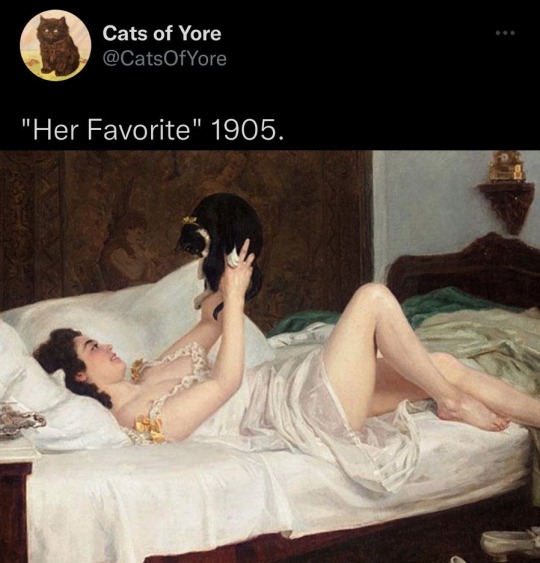
By Nikolai Bodarevsky
606 notes
·
View notes
Text
It's time to recall the article where they explain origin of nose-booping through the process of cats domestication










1 note
·
View note
Text
Just to add historical context to this, cat shows were popularized and possibly began because of women! The first historically documented cat show took place in England in 1598 (in which cats would compete for best mouser). Other sources name Harrison Weir is generally credited for the first national cat show in 1871, but other sources indicate that women began cat shows on a less formal level prior to this, and that these shows were not historically recorded. Cat shows were overwhelmingly organized by women to raise money for charities, especially those that focused on animal welfare. Women and our creation of cat shows contributed a lot of information to science, particularly genetics, because women would breed their cats in order to select for specific traits and colors.

Edna B. Doughty and Louise Grogan with Persian cats. 1920s. Library of Congress Prints and Photographs Division. https://lccn.loc.gov/93502603.
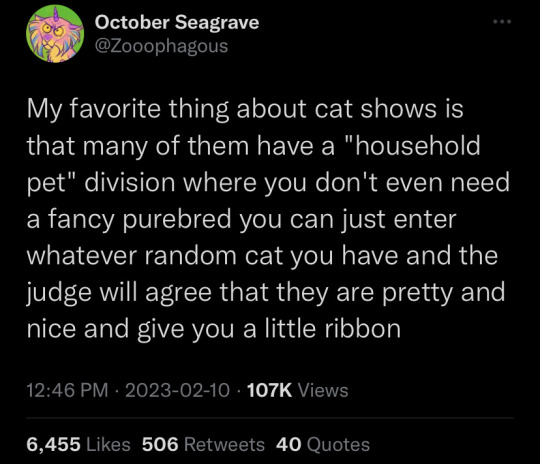
163K notes
·
View notes
Text
Cats: The Furry Legends of History and Culture
Let’s talk about cats. Those mysterious, fluffy creatures that rule the internet, our homes, and sometimes, our lives. We adore them, but there’s so much more to cats than just purring, napping, and occasional chaos. Today, we’ll dive into some hilarious facts, fascinating history, and curious cultural representations of our feline friends. So, grab a cup of coffee and let’s make this a perfect…
#Abyssinian#Cat Breeds#Cat Culture#Cat Facts#Cat History#Cat Legends#Cat Lovers#Cat Superpowers#cats#Cats In Different Cultures#CIA Operation Acoustic Kitty#Domestic Shorthair cat#Egyptian Cats#Feline Curiosities#fun facts#Maine Coon cat#Persian cat#Pet History#Scottish Fold cat#Siamese#Sphynx cat#Sunday Read#Viking Cats
0 notes
Text
American KEUDA Breed Fact

The name (American KEUDA) is an acronym of "Kitten Evaluation Under Direct Assessment", a program in Texas, Oklahoma, and New Mexico in the 1980's, that was attempting to breed a superior quality barn cat from semi-feral specimens. The aim of the program was to produce a cat with the hardest qualities and strongest genes.
In 2002 the breed was standardized and defined. It is intended to focus on behavioral traits rather than physical characteristics.
CREDITS TO KUCING.BIZ
#cat#cute#cat facts#cat fact#cats#interesting#science#genetics#biology#animals#cat history#cat breed#cat breed history#american keuda#keuda#kitten evaluation under direct assessment#barn cat#barn cat breed
24 notes
·
View notes
Text
Santa's Helper
“Santa’s Helper,” a delightful and whimsical painting, captures the viewer’s eye with its charming combination of holiday spirit and feline curiosity. The piece features a fluffy white cat with bright, almost ethereal blue eyes, nestled beside a plump, red-suited Santa figure, whose larger-than-life presence is suggested by a hint of a white-gloved hand and the familiar red fabric. The cat, with…
#acrylic on canvas#ancient Egypt cats#cat history#cat naps#cat painting#cats and boxes#cats and Christmas#Christmas cat facts#Christmas painting#Christmas tree cat#cozy Christmas scene#cozy winter art#feline art#feline companionship#festive artwork#holiday art#holiday decor#Norse mythology cats#pet portraits#purring therapy#Santa Claus#Santa&039;s Helper#whimsical art
0 notes
Text
Orangey the Cat
Orangey was an incredibly in-demand cat actor back in the 50’s and 60’s! Orangey belonged to Hollywood animal trainer Frank Inn, and was a beautiful ginger cat with a patient personality for filming. Orangey made his movie debut in the 1951 film Rhubarb, in which he plays the namesake character, a “millionaire” cat who was gifted an entire baseball team by his late owner. According to the book…
#animal history#batman#beverly hillbillies#cat history#comedy of terrors#eartha kitt#ginger cat#hollywood history#orangey the cat#rhubarb#rhubarb the cat
0 notes